Last Updated on November 15, 2024 by teamobn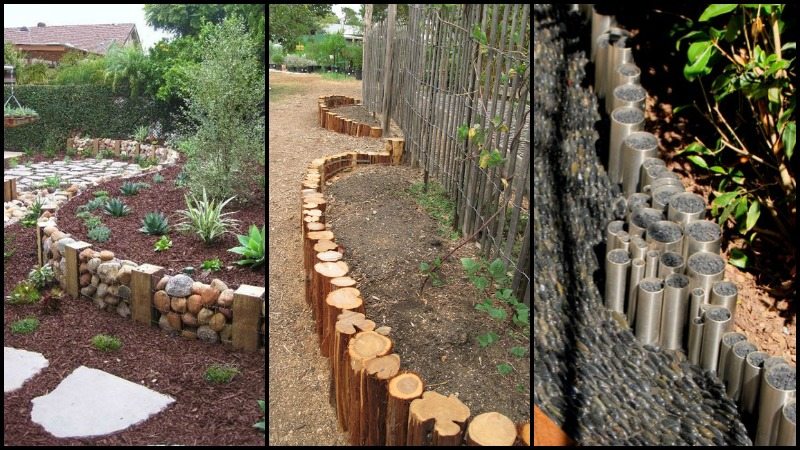
Sometimes it’s great to have your garden edge merge with your lawn, especially if you’re using a groundcover. But, more often than not, a defined edge is a better option. Garden edging defines your garden and also gives you a clean edge to mow up to. If you’re looking for some edging ideas, here’s a little inspiration…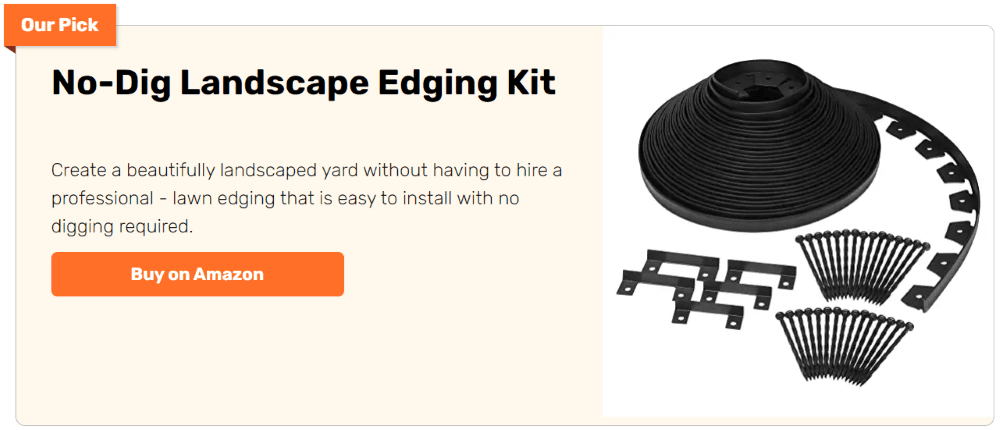
These ideas are perfect for when you want to accentuate a garden bed. You can also use some of these materials for creating raised garden beds!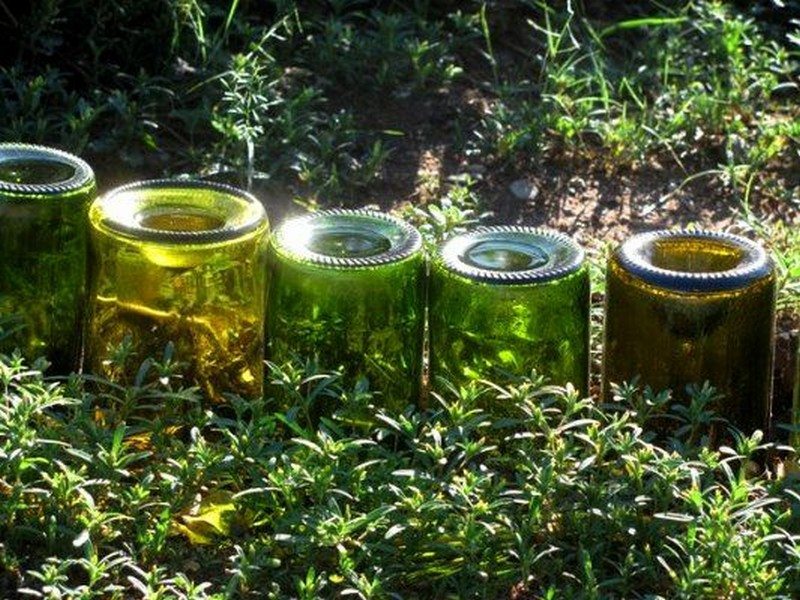
Most of the examples in this list make strong and rigid borders for your garden. The gabion, in particular, is the best idea if you want to plant some greens in a steep area in your yard. (You can learn more about gabions and their benefits here.)
Though not all of these garden edge ideas mean upcycling and saving, we are certain they can all give character to your yard! Ready to make your garden a bit more interesting? Which of these garden bed edging ideas would you want to do?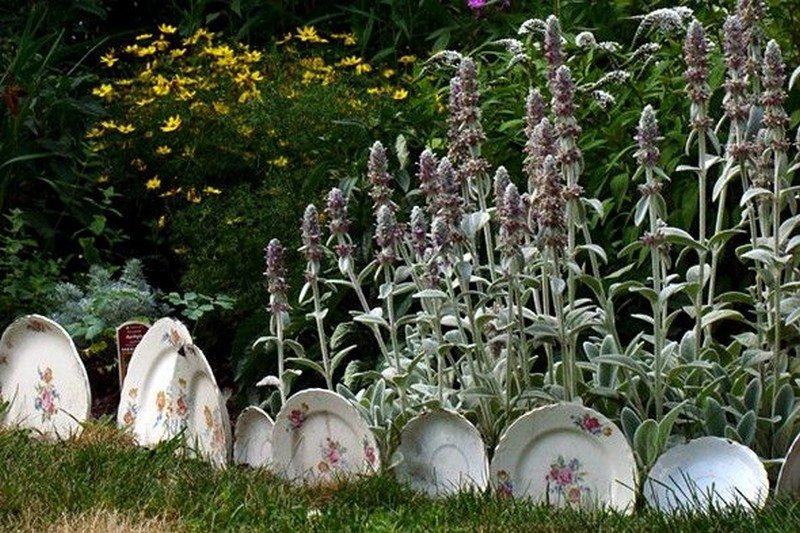
Contents
Garden Edge Ideas
Click on any image to start the lightbox display. Use your Esc key to close the lightbox. You can also view the images as a slideshow if you prefer?
Glass Bottles
A clever and environmentally friendly approach to recycle leftover materials is to use glass bottles as a garden edge. Many times free or very inexpensive, bottles can be a tempting choice for people wishing to give their landscape eding ideas a distinctive touch. Just gather similar-sized and shaped bottles to make this garden boundary.
With about one-third of each bottle visible, bury them neck down in the earth. Along with stabilizing the bottles, this also produces a vibrant and attractive border. There are countless design options with the range of colors and forms of the bottles, from simple patterns to exact rows. Glass bottles are a useful and long-lasting garden edging option because they are not only aesthetically pleasing but also weather-resistant.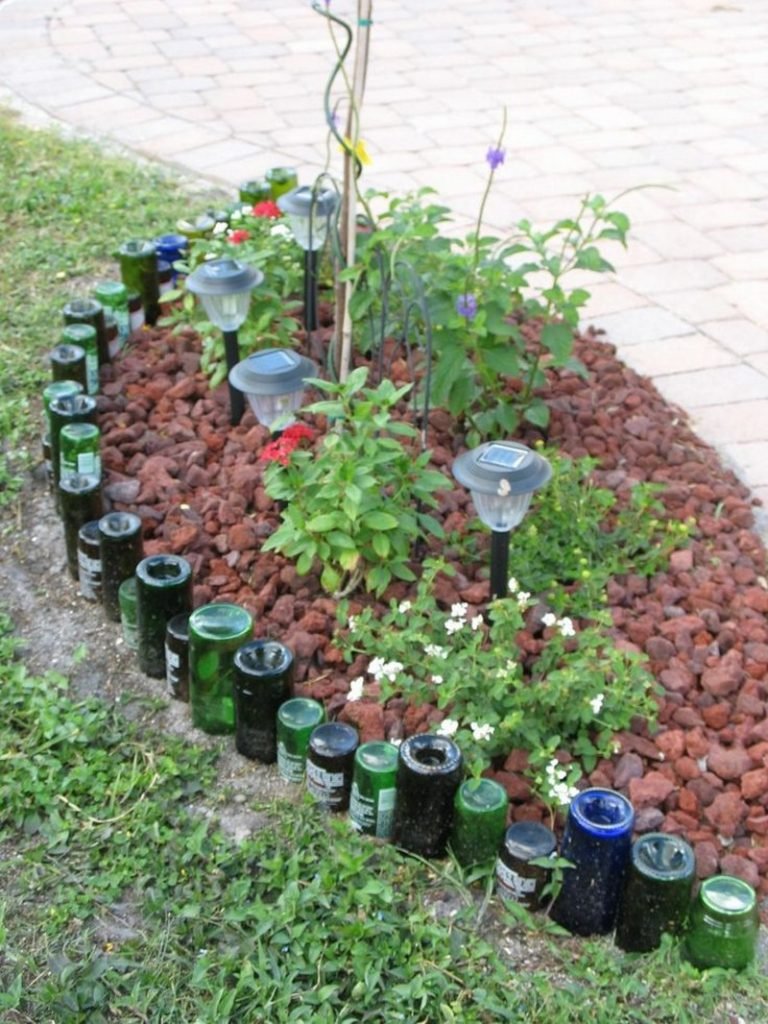

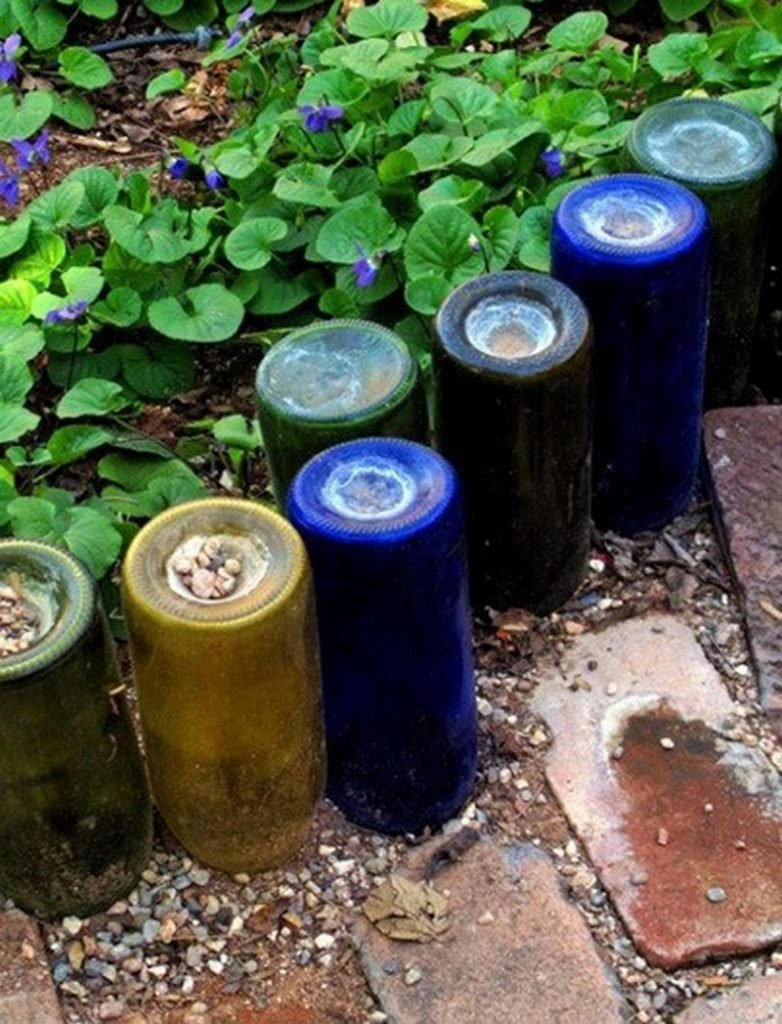
Scrap Wood
Scrap Wood While it can provide a lovely and rustic garden border, lifespan depends on the kind of wood used. When exposed to soil directly, most untreated timbers—like pine—are vulnerable to termite attack and rotting.
Natural woods like Australian turpentine, cypress, or cedar might provide a more robust garden edge. Because of their well-known resistance to insects and rot, these woods are perfect for outside applications. Using scrap wood should be done so away from buildings since it can draw termites that could spread to other neighboring buildings. Your wood garden edge will continue to look great for many years to come with routine care, such applying sealer or looking for decay.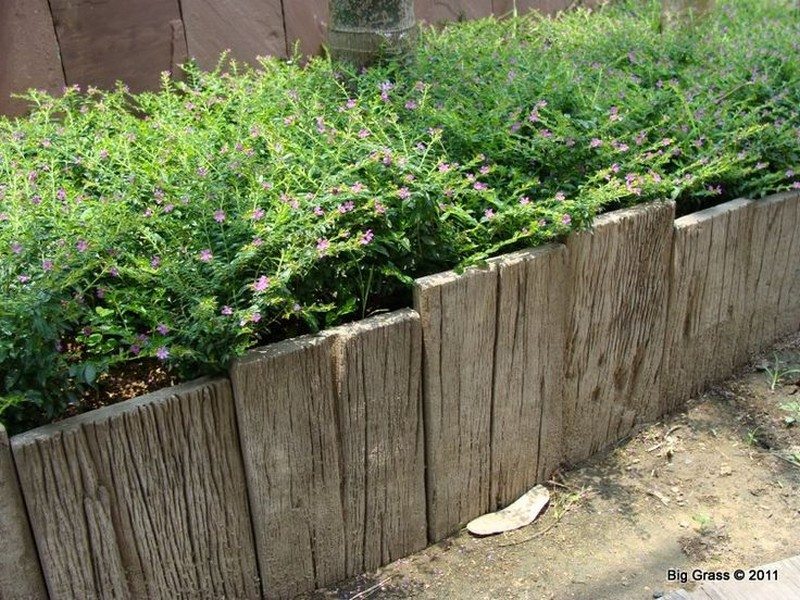
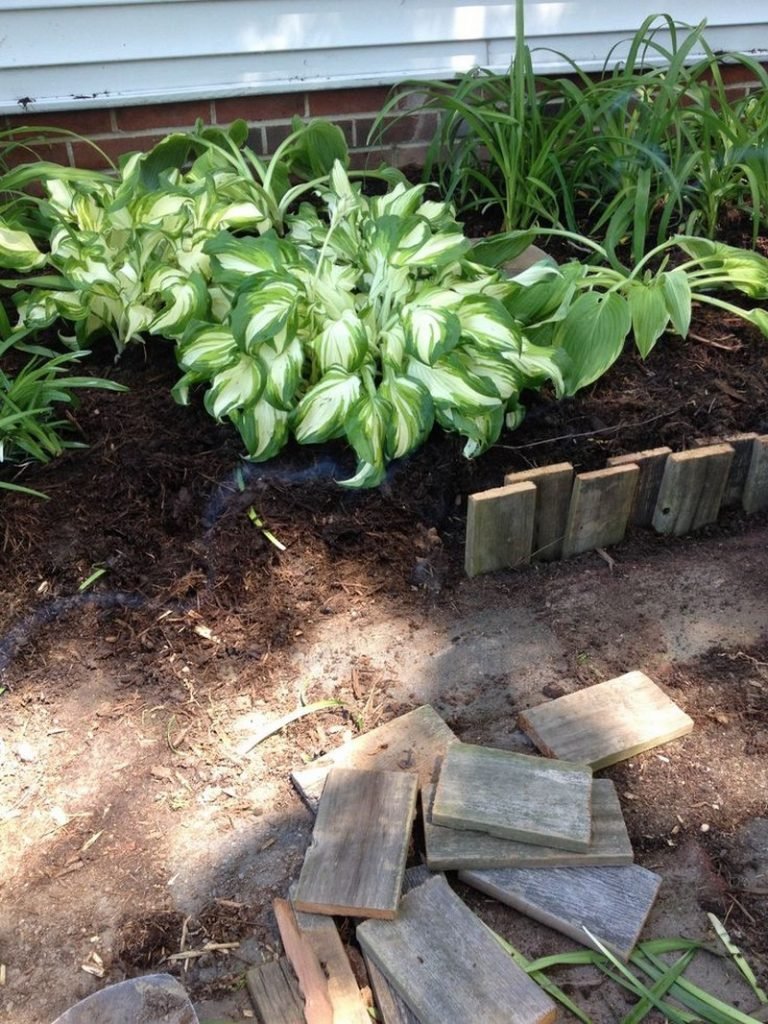
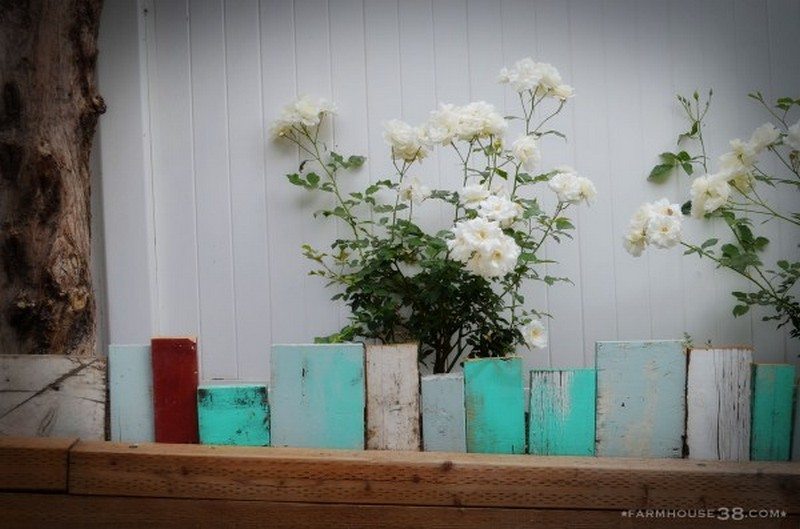
Wood Blocks
Using wood blocks as a garden edge can add a rustic and structured appearance to your garden beds. These blocks are versatile and can be arranged in various patterns to create an eye-catching border. When selecting timber for this purpose, it’s crucial to choose treated wood or naturally rot-resistant types to ensure your garden edge withstands the elements.
Woods like cedar or pressure-treated pine are ideal because they resist decay and insect damage. To install wood blocks as a garden edge, position them side by side in a trench, ensuring they are level and secure. This will create a clean, defined line that not only looks attractive but also helps contain soil and mulch. Regular maintenance, such as applying wood preservatives and checking for signs of wear, will extend the life of your wood block garden edge, keeping your garden neat and beautiful.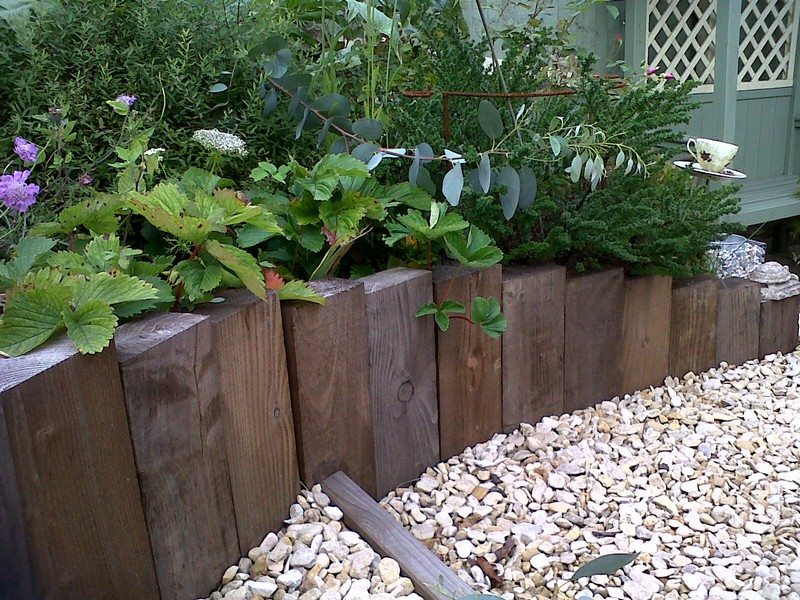
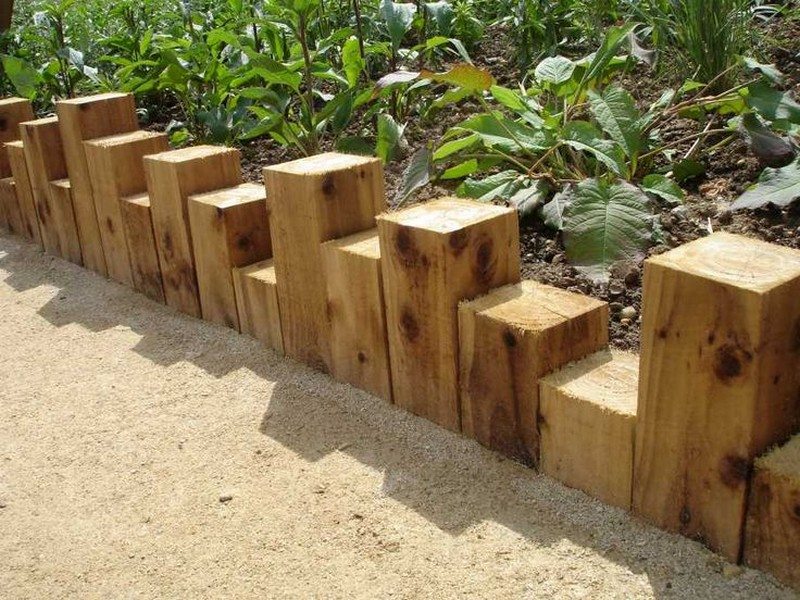
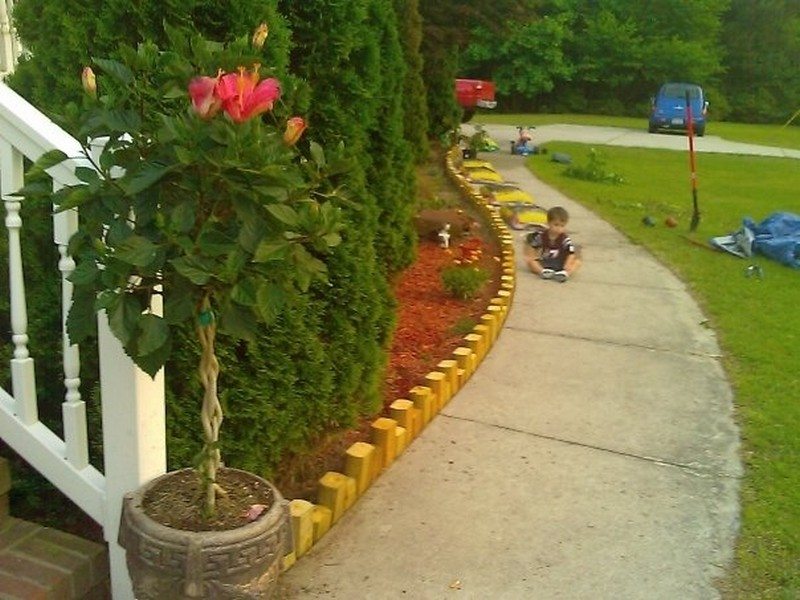
Wood Logs
Wood logs make an excellent garden edge, offering a natural and earthy look that blends seamlessly with outdoor environments. Often available for free from storm-damaged trees or old logs, they provide an affordable and eco-friendly edging solution. When using wood logs as a garden edge, select logs that are sturdy and free of rot. Hardwoods like oak or locust are particularly durable and less prone to decay.
Place the logs end-to-end along the perimeter of your garden beds, ensuring they are partially buried for stability. This not only secures the logs in place but also creates a more cohesive and polished garden edge.
Additionally, the uneven surface of logs adds a charming, rustic feel to your landscape. With minimal upkeep, such as checking for pests and ensuring logs remain secure, your wood log garden edge will enhance the natural beauty of your garden for years to come.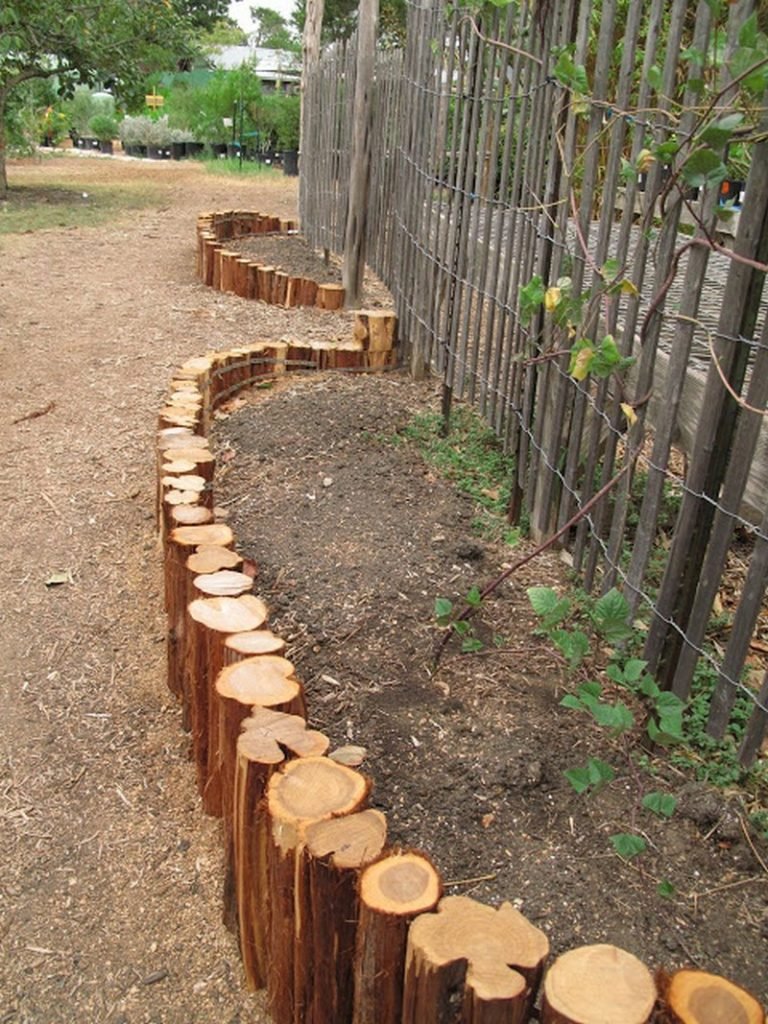
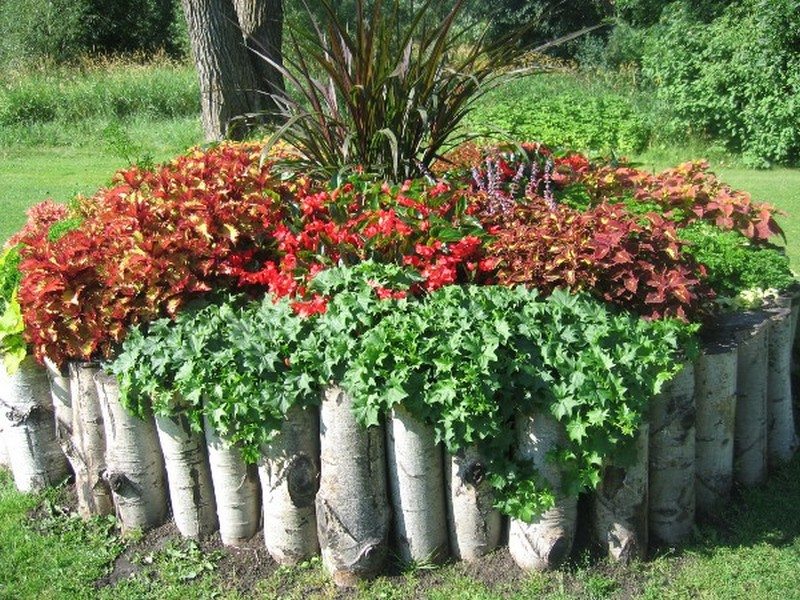
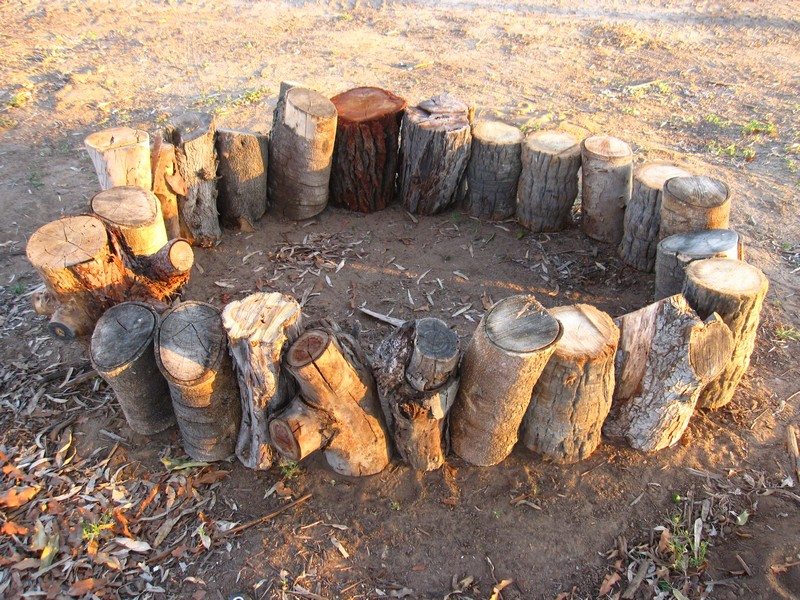
Cinder Blocks
Concrete or cinder blocks make a strong and adaptable garden edge. They have the special benefit of being planters as well. Along the garden perimeter, you can make individual “pots” by stuffing the empty areas of the blocks with dirt. Smaller-space-loving herbs like chives, sage, and parsley grow wonderfully here.
Recall, though, that these block planters will dry out more quickly than the main garden bed. Select drought-tolerant types or give your plants more regular waterings to keep them healthy. For gardens on slopes or in places with a lot of foot activity, cinder blocks’ strong structure also provides outstanding stability. Cement blocks create a useful and attractive garden edge whether they are painted to add a pop of color or left in its natural grey.
Cinder or concrete blocks offer the opportunity to double edge your garden by planting separately inside the block. Keep in mind that these ‘pots’ will dry out a lot faster than the main garden so either plant hardier varieties or water frequently. Consider planting herbs like parsley, sage, and chives in the ‘pots’!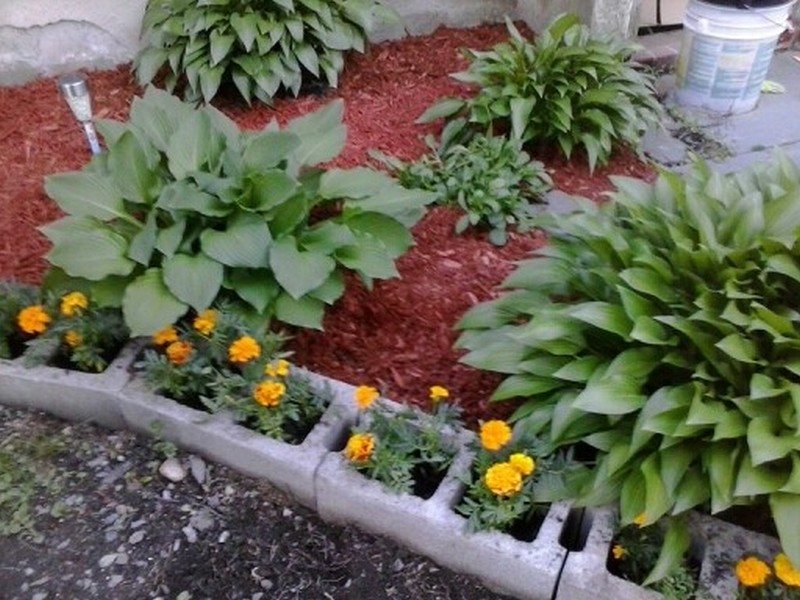
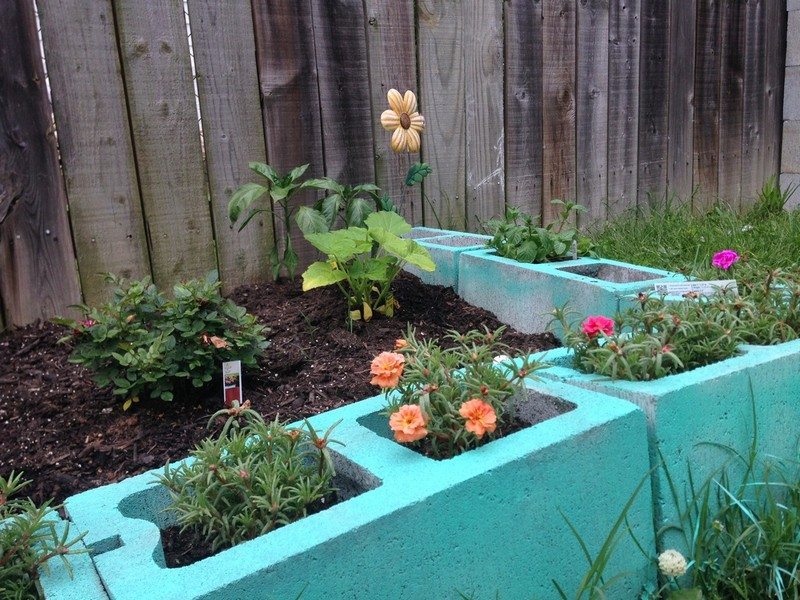
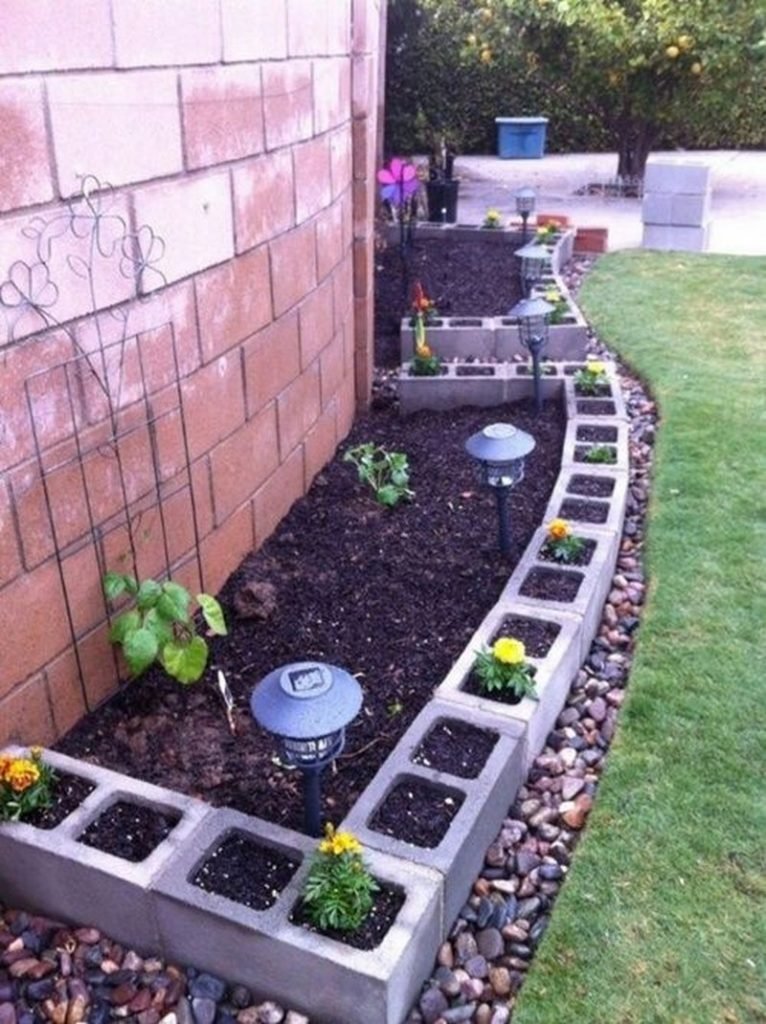
Plates / Dishes
For a whimsical touch to your garden, think about edging it with antique plates or dishes.
These goods are a gold mine at thrift stores, where they may be had for as low as five cents each.Get plates in different shapes, sizes, and designs to make a colorful and unusual border.
Step the plates on their edge and sink them halfway into the earth to install. Using this technique fixes the plates and also draws a lovely, ornamental border around your plant beds. Your garden can be made the center point of attention with the plates’ varied designs. Moreover, this kind of garden edge is an excellent approach to recycle and repurpose items, giving them fresh life in your outdoor area.
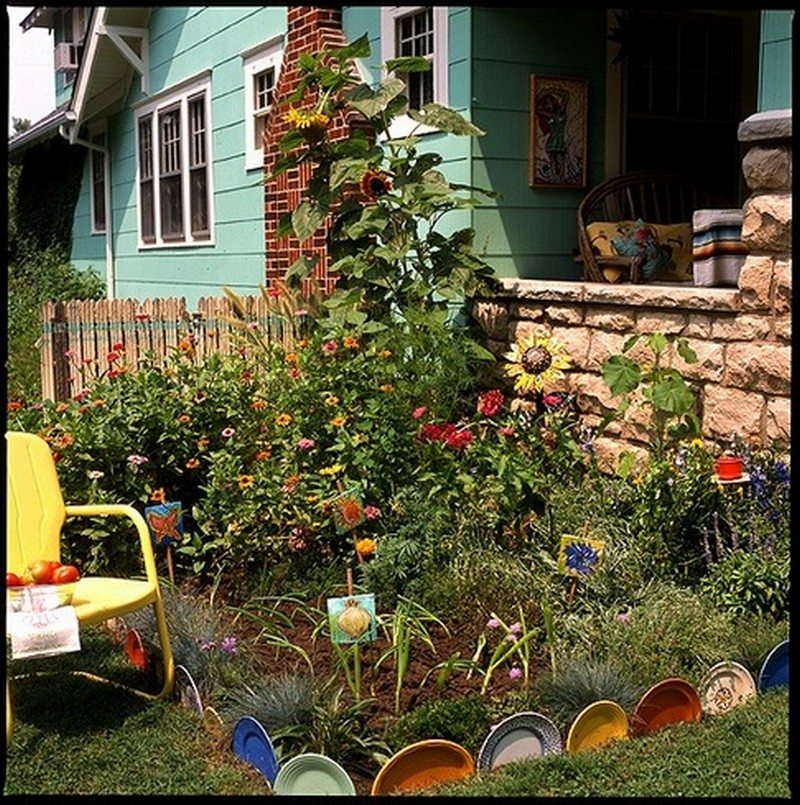
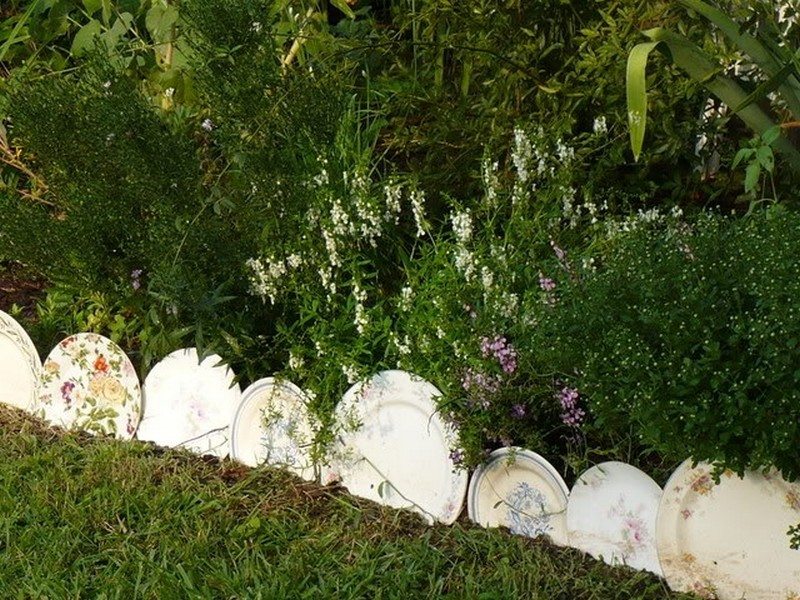
Gabions
Gabions are wire mesh baskets filled with rocks or stones, making them an incredibly strong and durable garden edge. This type of edging is particularly beneficial for creating raised garden beds or retaining walls. The robust structure of gabions can withstand significant pressure, making them ideal for gardens on slopes or areas prone to erosion.
Using gabions as a garden edge also offers aesthetic flexibility. You can fill them with various materials such as stones, pebbles, or even recycled concrete pieces, depending on the look you want to achieve. If you have access to a supply of rocks, gabions can be a cost-effective alternative to more traditional garden edging materials. Their natural appearance blends seamlessly into many landscapes, adding both functionality and rustic charm to your garden edge.
Gabion edging is immensely strong and is excellent as a retaining edge for raised gardens. If you have a ready source of rocks, they can be a very cheap alternative to conventional edging.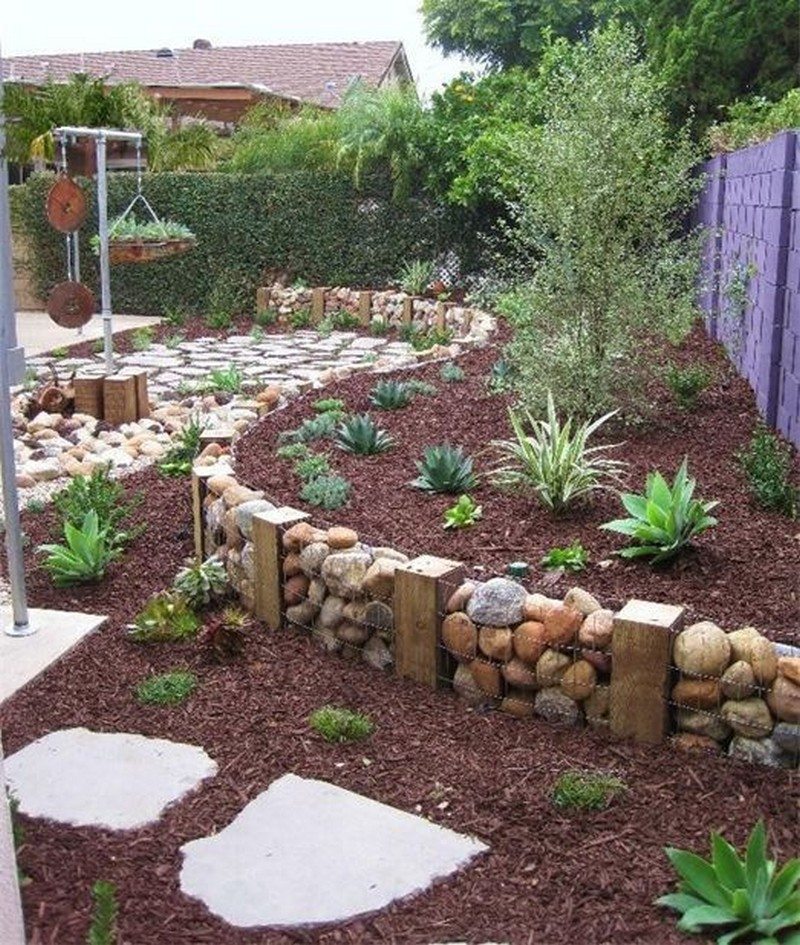
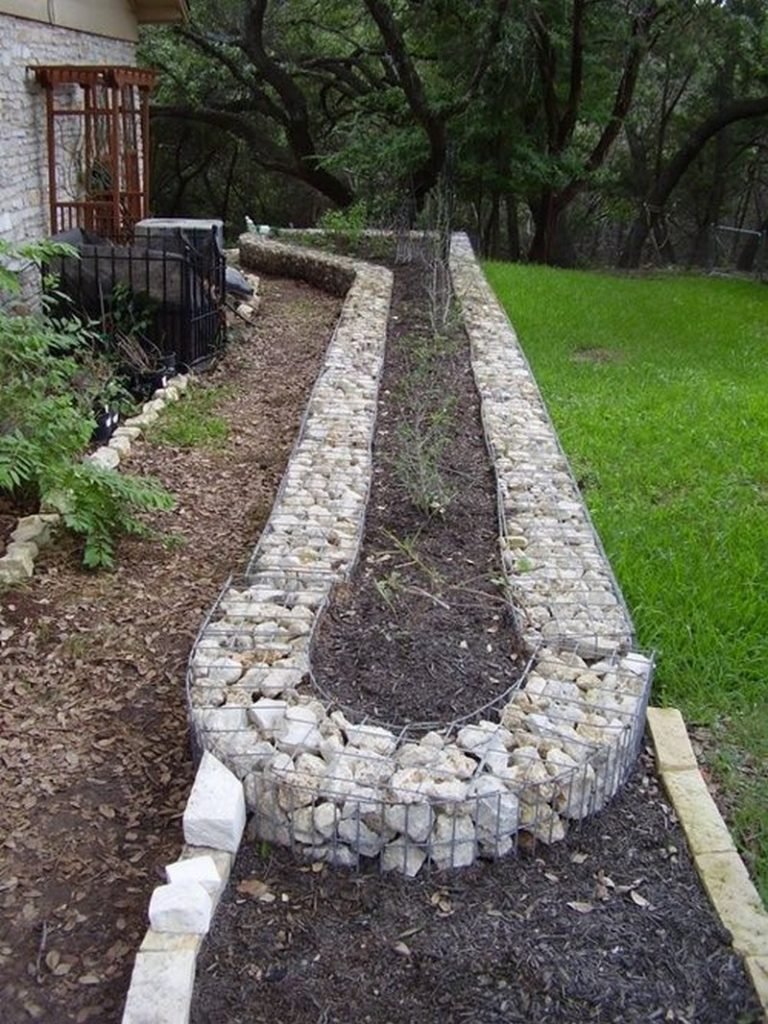
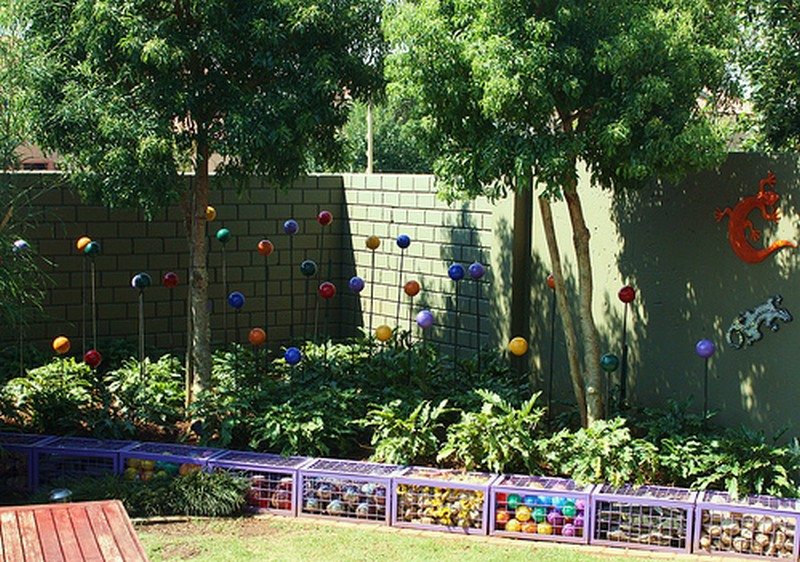
Wall Blocks / Bricks
Wall blocks or bricks are classic and versatile choices for creating a solid and attractive garden edge. They come in various shapes, sizes, and colors, allowing you to match them with your garden’s style. Before purchasing new materials, it’s wise to explore options like Craigslist or Gumtree. These platforms often list free or low-cost blocks and bricks from people looking to clear out their yards after a garden renovation.
Reusing these materials not only saves money but also supports sustainable practices by giving discarded items a second life. When installing wall blocks or bricks as a garden edge, ensure they are laid securely and evenly to provide a neat and stable border. This type of edging not only defines your garden beds but also adds a touch of timeless elegance, enhancing the overall appeal of your outdoor space.
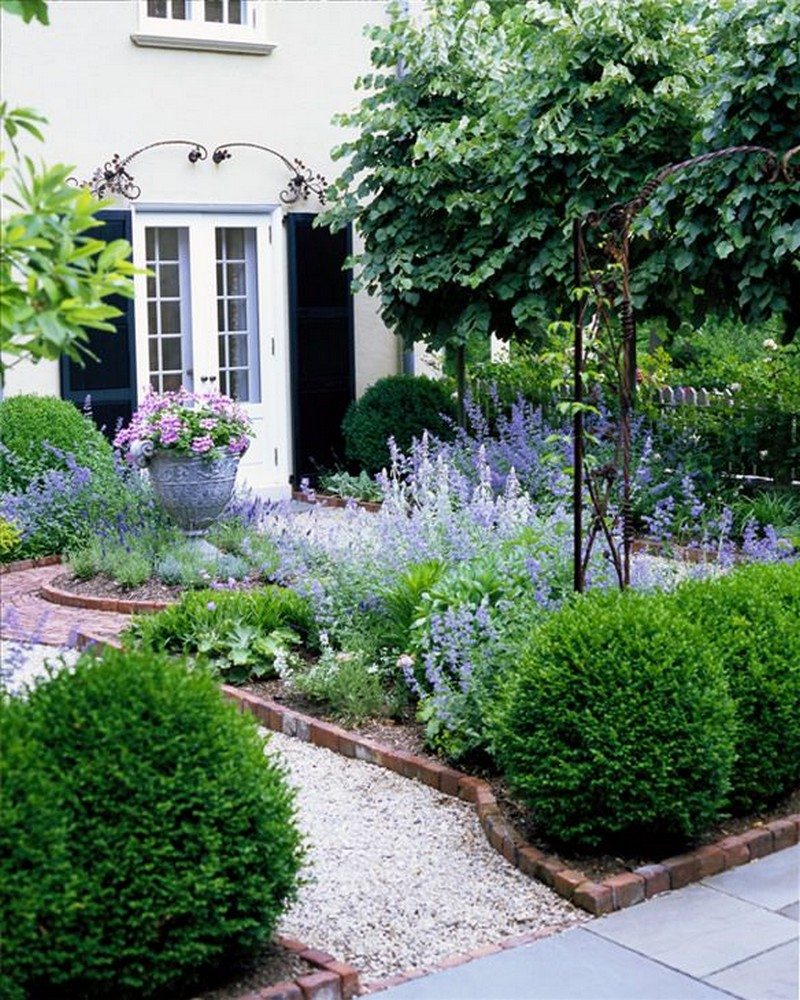
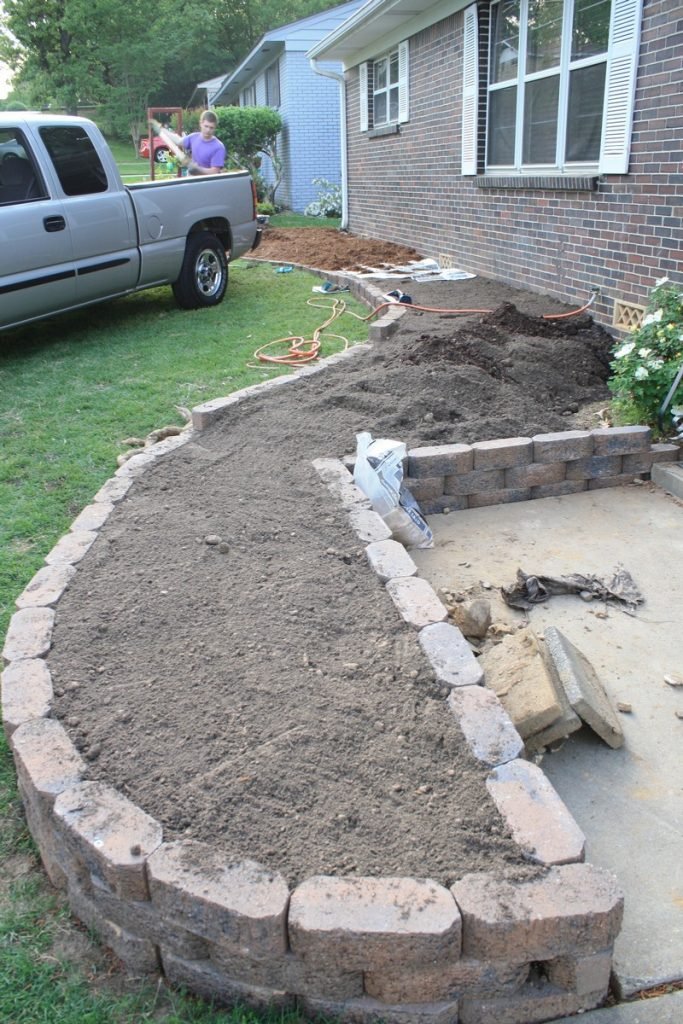
Stones / Rocks
Being a natural product, stone always looks great. It blends well with any style of home and garden. If you have to buy your stone, try sourcing it via community noticeboards or sites like Gumtree although, if you’re after larger quantities, it’s usually cheaper and more efficient to deal directly with the quarry.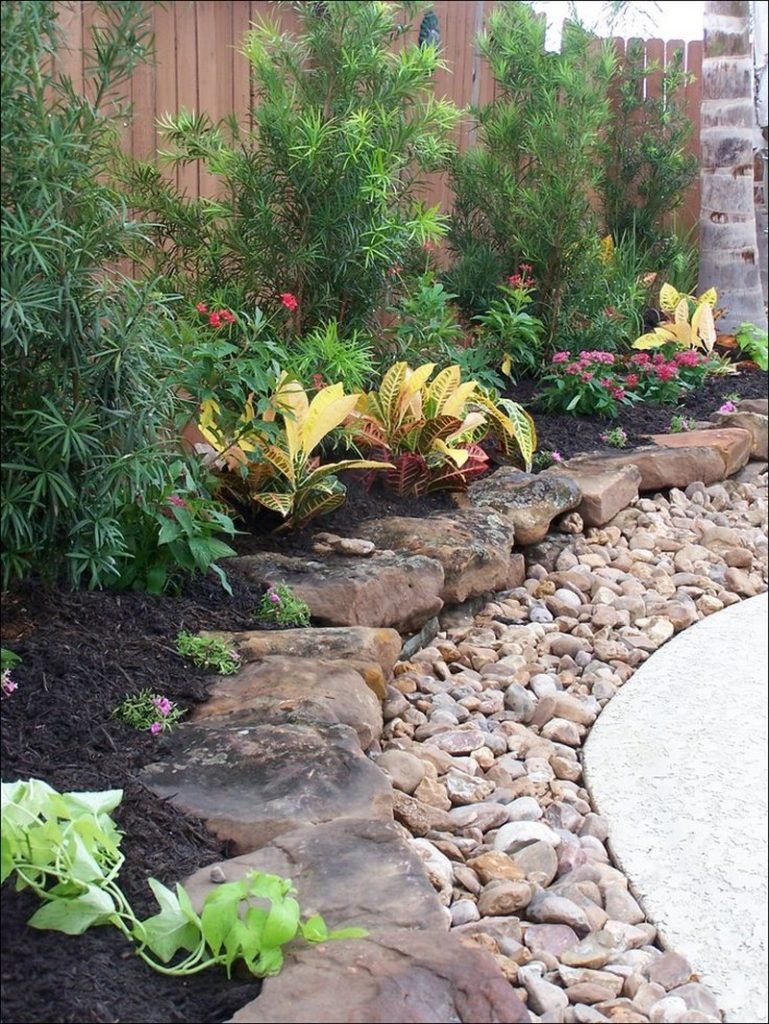
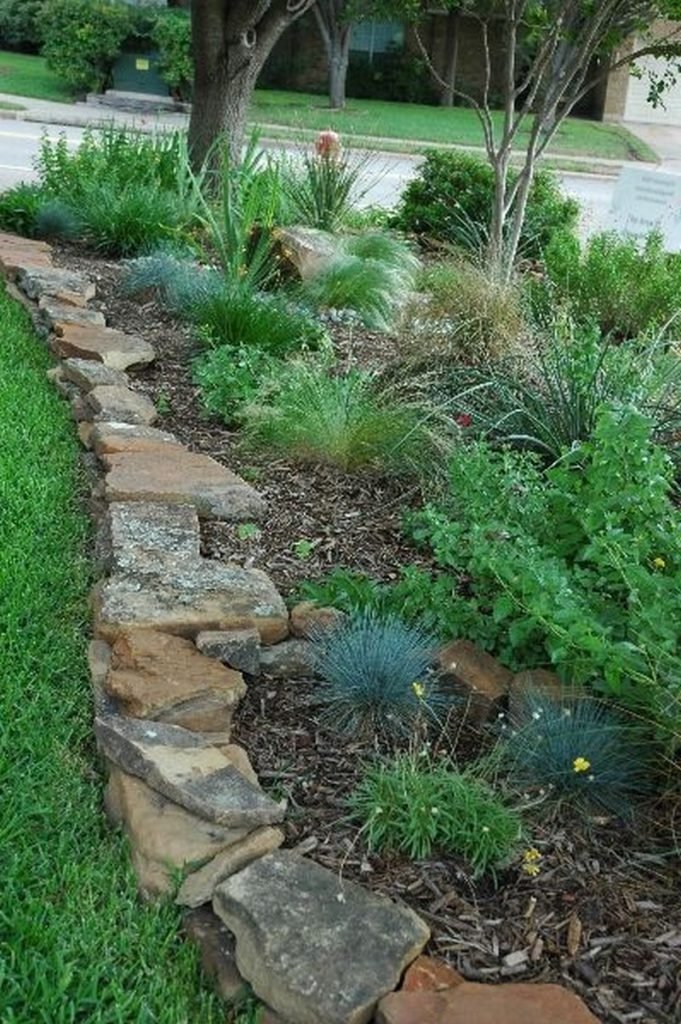
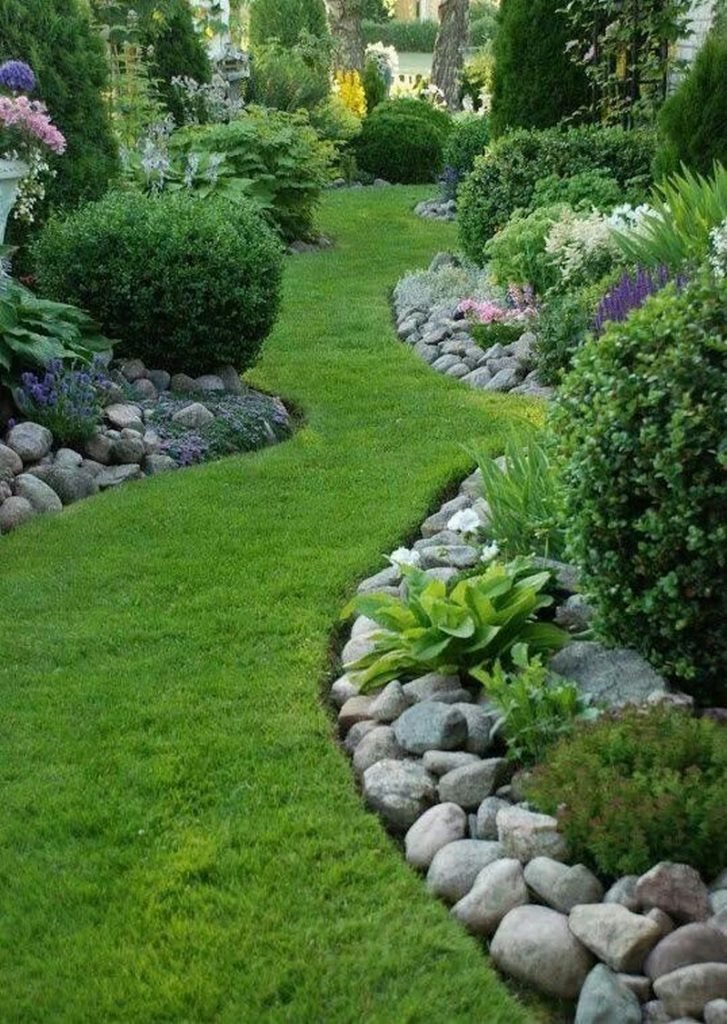
Metal / Terra Cotta Tubes
Pipe offcuts are usually reprocessed but if you can find a source, they make an interesting and strong garden edge, especially if used to plant succulents or cacti as shown in the second image.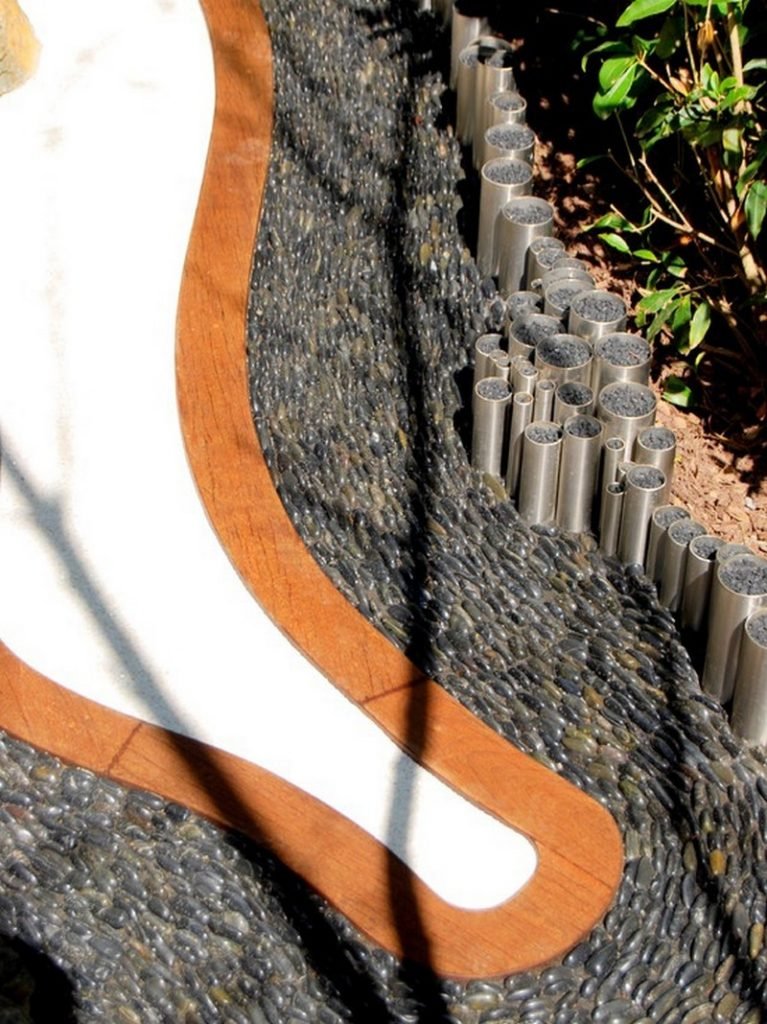
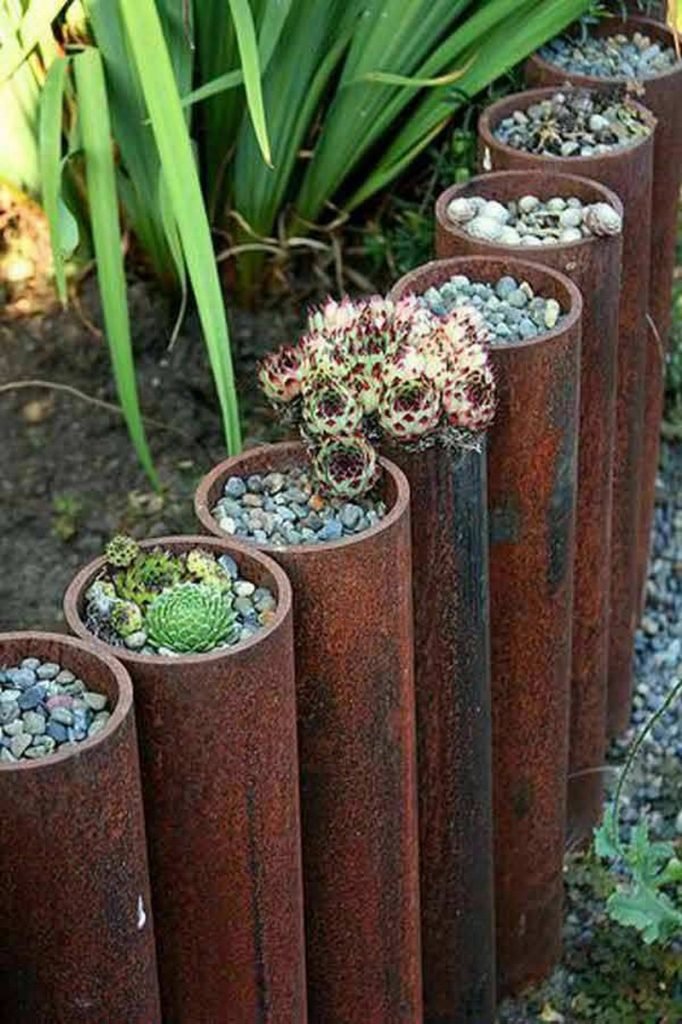
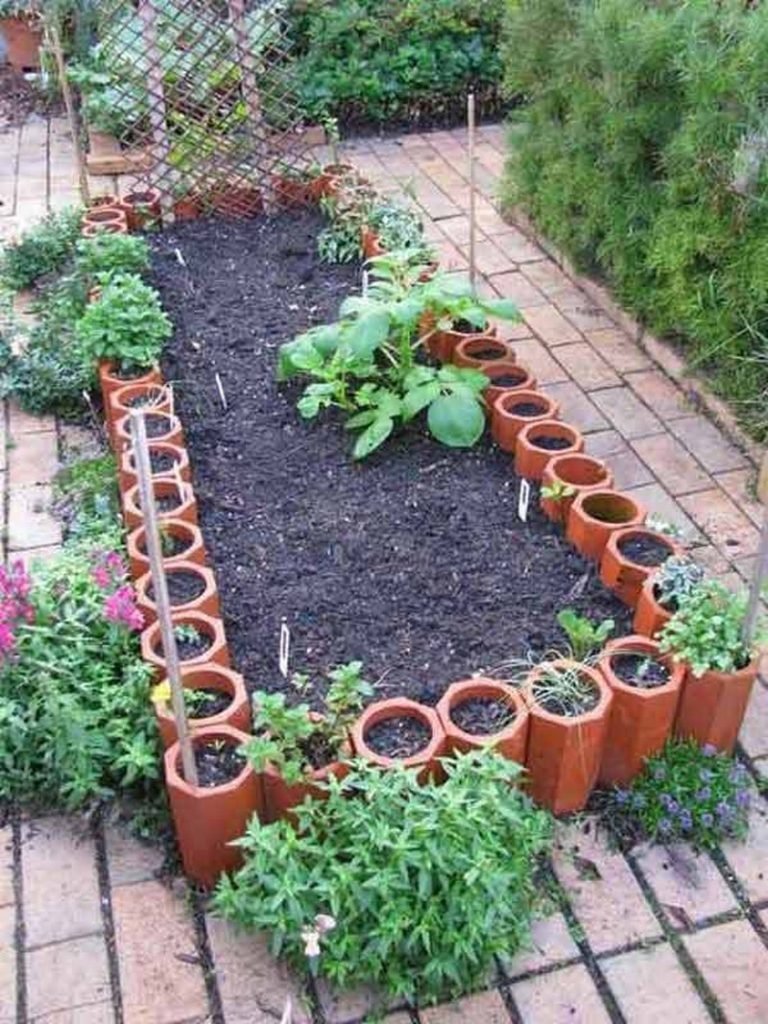
Bamboo
In the right setting, bamboo edging looks gorgeous. Although it’s grass, the very high silica content in bamboo makes it much more resilient than many timbers. One variety, Guadua, is reputed to last more than 40 years in the ground without chemical treatment.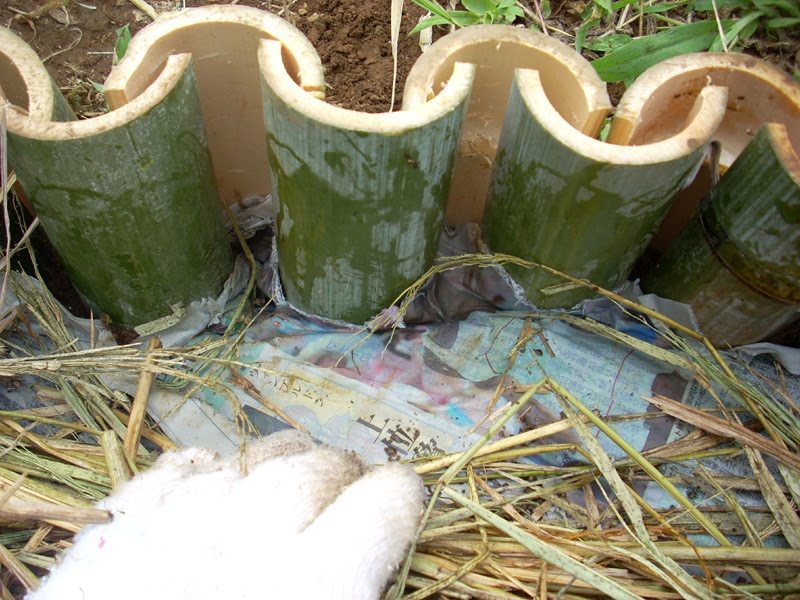
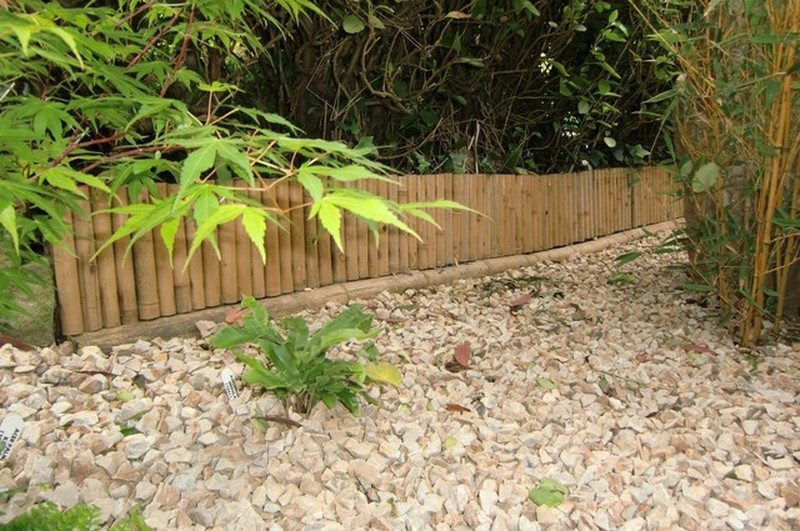
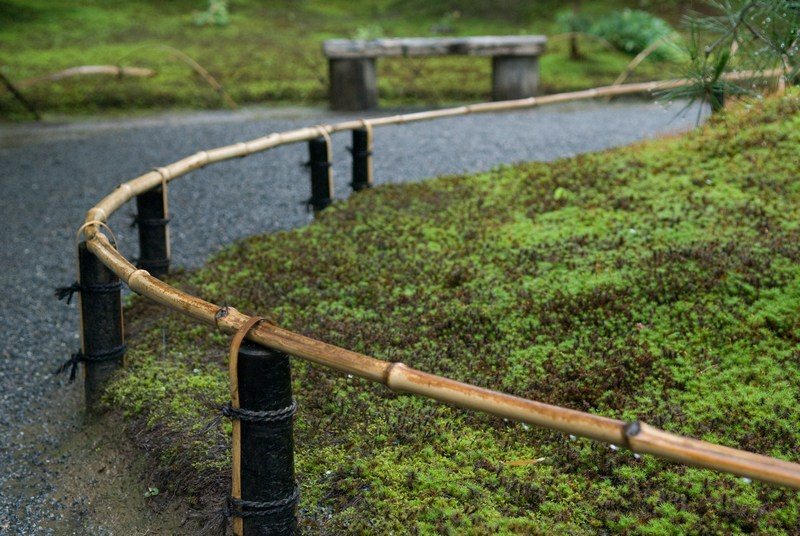
We hope you’re feeling inspired now to get out and do that garden edging you’ve been thinking about 🙂
Installation Options for Metal Garden Edging Ideas
When it comes to metal edging, you have a couple of versatile installation options that cater to different landscaping needs. Here’s a breakdown:
- Interlocking Sections: Many metal edging solutions come in sturdy, pre-cut sections that easily interlock. These pieces can be fitted together to extend as necessary, which makes them ideal for straightforward, linear edges. This method is excellent for creating clean, defined boundaries in your garden or along pathways.
- Flexible Rolls: For more intricate designs, metal edging in roll form offers unparalleled flexibility. These rolls can be manipulated to follow curves and contours, accommodating landscape designs with natural or fluid lines. This option is perfect for adding artistic flourishes to flowerbeds or defining unique lawn shapes.
Regardless of your choice, both options are designed to withstand the elements and help you maintain a polished outdoor space. Whether you’re managing a small garden or coming up with an expansive lawn edging ideas offers adaptable solutions for various layout preferences.
Installation Options for Metal Garden Edging Ideas
When it comes to metal edging, you have a couple of versatile installation options that cater to different landscaping needs. Here’s a breakdown:
- Interlocking Sections: Many metal edging solutions come in sturdy, pre-cut sections that easily interlock. These pieces can be fitted together to extend as necessary, which makes them ideal for straightforward, linear edges. This method is excellent for creating clean, defined boundaries in your garden or along pathways.
- Flexible Rolls: For more intricate designs, metal edging in roll form offers unparalleled flexibility. These rolls can be manipulated to follow curves and contours, accommodating landscape designs with natural or fluid lines. This option is perfect for adding artistic flourishes to flowerbeds or defining unique lawn shapes.
Regardless of your choice, both options are designed to withstand the elements and help you maintain a polished outdoor space. Whether you’re managing a small garden or designing an expansive lawn, metal edging offers adaptable solutions for various layout preferences.
Features of Metal Garden Edging Ideas for Landscaping
Metal edging is an excellent choice for those looking to achieve precise boundaries in their gardens, flowerbeds, and lawns. Here are its key features:
- Durability: Crafted from hard-wearing metals, these edgings resist rust, wear, and the elements, ensuring longevity and minimal need for replacement.
- Ease of Installation: Many options come in manageable, interlocking lengths. This feature allows you to expand your project seamlessly as your landscaping needs grow.
- Flexibility: Some metal edging variants are available in rolls with a flexible design, ideal for creating smooth contours and curves that can adapt to any landscape design.
- Versatility: Suitable for a variety of garden and landscape styles, metal edging can be used to define clear boundaries while still complementing the overall design of your outdoor space.
These features make metal edging a practical and aesthetic choice for anyone looking to enhance their landscape’s structure and appearance.
Related Products for Landscape Garden Edging Ideas
When embarking on a landscape edging project, selecting complementary materials can enhance both functionality and aesthetics. Here are some popular options to consider:
Durable Metal Edging
Metal edging is known for its strength and longevity, offering a sleek, modern look for any garden or lawn. It’s perfect for creating clean lines and preventing grass and soil from spilling into undesired areas.
Versatile Plastic Edging
Plastic edging is a flexible and budget-friendly choice. It’s easy to install and can be molded to fit curves or unique designs within your landscape, making it a popular option for DIY enthusiasts.
Natural Wood Edging
For those aiming to maintain a rustic aesthetic, wood edging adds a natural touch to any outdoor space. Its earthy appearance blends seamlessly with gardens and lawns, and it can be easily customized to specific lengths and shapes.
Robust Concrete Pavers
Concrete pavers offer a sturdy and enduring option for your landscape edging projects. These come in various shapes and sizes, allowing for creative patterns that can enhance pathways and patios.
Elegant Edging Stones
Edging stones provide a classic and refined finish to garden borders. Available in various textures and colors, they can complement any landscape design while adding a touch of elegance.
Selecting the right edging material depends on the specific needs and style of your landscape, so consider these options to create the perfect outdoor space.
If you liked this, you might also like these gardening ideas…






